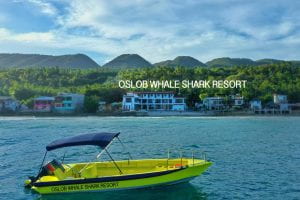Hey urban nomads! One of my seniors created an Instagram account dedicated to sharks and its conservation which inspired me to learn more about this majestic animal and that’s when I chanced upon whale shark tourism.
Here’s one of the largest whale shark- watching experience in Oslob – where tourists not only get to observe sharks from far but also get the chance to swim with them. However, the operation is controversial as sharks do not gather naturally but rather hand-fed, which means that it guarantees that tourists will be able to take close up photos with the sharks (Warne, 2018). Although it is called watching, there is a lot of posing involved, with the sharks acting as a background.
This raises ethical questions such as the impact of human interaction on the animals and whether it does more harm to the natural wildlife specially since whale sharks are endangered and have constantly been the centre of poaching due to the demand for their meat, fins, oil and skin.
Although there are rules that if a tourist was found to have touched a shark, he or she may go to jail, more than 95% of them actually break the rule (Warne, 2018).
Benefits of whale shark tourism
Before elaborating on how shark tourism can have a negative impact on the environment, perhaps it would be important to share some benefits as they are some of the reasons why shark tourism still exists despite its controversy.
Shark tourism reduces the fishing pressure around the area as the local fishermen no longer have to catch fish for food since they can simply supply shrimp needed for the shark and thus place less pressure on the declining fish stocks. Also, fishermen are given an alternative source of income such as ferrying the tourists and feeding the sharks. Housewives turn to entrepreneurs as they sell souvenirs, fruits and snacks.

Resorts boosting the tourism industry
Besides, whale shark tourism attracts tourists and hence the building of hostels and resorts and add on to the tourism revenue – 60% of the revenue goes to the fishermen, 30% goes to the local government and 10% to the local population (Warne, 2018).

While it is true that whale shark tourism has brought about positive impacts for humans as fishermen no longer have to worry about their unstable source of income and tourism also benefits the local fish population since fishermen can rely on their new found occupation; it seems that the cons of environmental issues brought about from this form of tourism largely outweighs the benefits as will be elaborated in the next post. As the saying goes, “a picture paints a thousand words” and I’m sure you do not need me to elaborate on what pollution can do to our oceans.
So stay tuned as I will be talking about how we as tourists pose a direct threat to the whale shark and making them reliant on us for food.
References
Warne, K. (2018, August 30). Inside the Chaotic World of Whale Shark Tourism. Retrieved October 25, 2020, from https://www.nationalgeographic.com/animals/2018/08/whale-sharks-tourism-philippines-benefit-harm-news/

